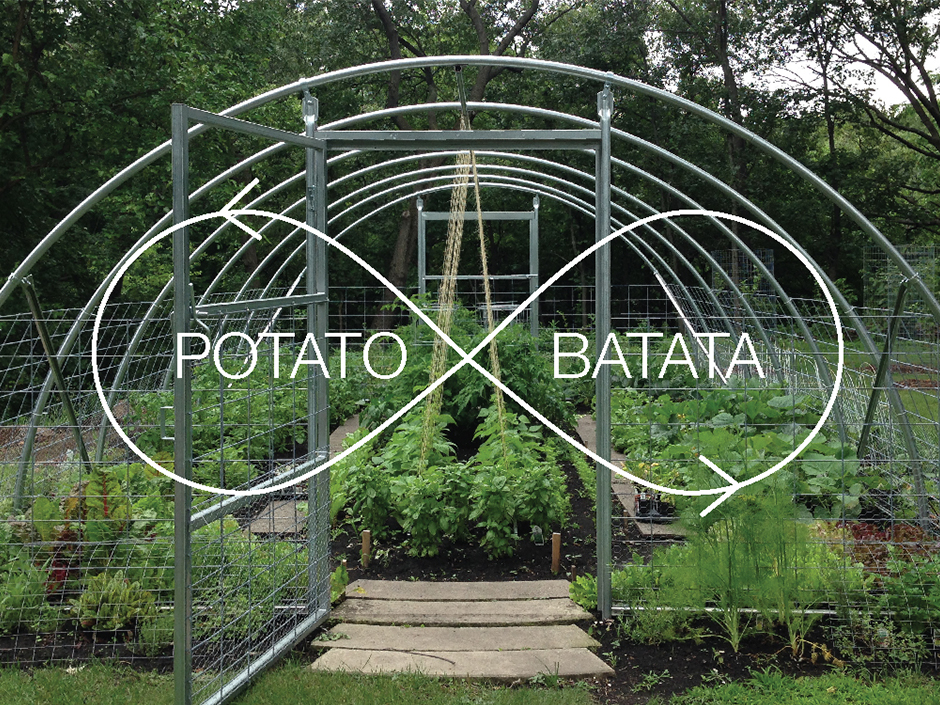FRANCESA
RANCESWR
ANCESWHT
NCESWHIE
CESWHITT
ESWHITEA
SWHITEHL
WHITEHE
HITEHEA
ITEHEAD
TWHEADF
EHEADFR
HEADFRA
EADFRAN
ADFRANC
DFRANCE
DATE
2011 - 2013
Location: Lima, Peru
CHICAGO TEAM
Frances Whitehead, Lead, Artist
Douglas Pancoast, Architect
Vince Michael, Historic Preservation
CULTURAL FUTURES STUDIO
Sia Khorrami, Samantha Alaimo, Karen Karuda
DJ Catrow, Danielle Potts, Laura Crane
Cassie Rogg, Veronica Diaz, Maria Socha
Duane Hagerty, Sara Tietje, Julie Hess
Emily Wallrath, Brooke Ingram, Michelle Yuan
Dina Khordorkovskaya
LIMA METROPOLITAN TEAM
Anna Zucchetti, Deputy Manager of Environment
Gunther Merzthal Yupari, Urban Agriculture Specialist
Miriam D'iganzio, Architecture Without Borders
Additional Documentation

DIASPORE
In botany, a dispersal unit consisting of a seed or spore, plus any additional elements that assist dispersal.
Diaspore began in 2010 as a research project on seedbanks. It has become a constellation of collaborative projects, an international experiment in reciprocity, enacting themes of dispersal, interiority, and public space in the global context. The pan-atlantic exchange of plants and people that began in 1533 with the first european encounter with the Peruvian potato is extended today through collaboration and redistribution of cultural and knowledge assets. The Diaspore project and the ongoing Diaspora Papa connect these civically driven interventions to all sites where food production and cultural production are intertwined, extending from Peru to urban sites in Chicago and beyond.
We were introduced to the City of Lima, Peru through potato research at the Centro Internacional de la Papa, which holds over 4000 varieties of Andean potatoes, the cultural heritage of ten thousand years of hybridization by indigenous growers. Lima has exploded in population in the last two decades, as highlanders relocate to coastal Lima, growing the city from 2 to 8 million inhabitants. The historic center of Lima, a crumbling but magnificent UNESCO world heritage site, now houses the urban poor, who also have inadequate food security.
Urban agriculture programs in Lima must be seen against the underlying ethical and pragmatic dilemma of sustaining a city that is arguably in the wrong place –a perpetual colonial legacy.
At the invitation of Lima’s new urban agriculture director we assembled a team of artists, architects, and preservationists from The School of Art Institute of Chicago to provide creative support to the City of Lima in their efforts to design a meaningful urban agriculture program, addressing both the needs of current inhabitants and the historic buildings. Understanding that communities of artists and designers are cultural resources barely tapped, we envision our work as an open source response to Lima’s colonial legacy –a redistribution of capacity –between Chicago and Lima. As a model of cooperation and reciprocity, our work with the City of Lima offers us, in turn, true agency to effect change.
Paradoxically, it is the ruined architecture and vacated facades that offer the greatest potential for green space. There are few parks and public spaces in the center of Lima –most of the open space is interior. Extending the architectural tradition of the courtyard house, this spatial pattern of interiority is a growing cultural idiom, as communities in every social strata create private, gated communities for self security. The dominant challenges for civic life in Lima are socio-spatial. However, the diminishing glacier-fed water supply, visible in the dry beds of local rivers, also creates a challenge for this desert city. Urban agriculture programs in Lima must inevitably be seen against the underlying ethical and pragmatic dilemma of sustaining a city that is arguably in the wrong place –a perpetual colonial legacy that must be examined as an unsustainable settlement pattern.
These contradictory conditions inform our strategies in Lima:
First, the immediate need for urban agriculture programs must enhance participation in civic life by the creation and use of public space.
Secondly, that urban agriculture must help prepare the citizens of Lima to address their environment.
Our work at such sites as the City Hall roof and the neighborhood surrounding the Central Market, address these civic aims and spatial conditions, symbolically and practically. They include local distribution strategies which mirror the regional and the global. The hex pattern emerged as a motif for many of these investigations, moving from a metaphor for participation at City Hall, the Civic Hive, to a space saving spatial configuration for roof gardens, to a motif for a mobile orchard, reversing the private courtyard and the spatial interiority of the city.
The hex pattern emerged as a motif for many of these investigations
The Diaspore project and the ongoing Diaspora Papa connect these civically driven interventions to all sites where food production and cultural production are intertwined, extending from Peru to urban sites in Chicago and beyond.















